5.06.2008
Masters of Photography
I thought this video would be a good way to end the semester. It is an accumulation of photographs from the greatest photographers in the past 100 years. Enjoy!!!
Artist Bio & Statement.
We were asked to write an Artist bio. as well as an artist statement for the "Hello Holga" show. This is mine, I combined the two together.
"I have been exploring photography for the past four years, but within the last two I have found myself exploring the darkroom rather than my predominantly digital past. My recent photographic endeavors utilize a 35-mm SLR as well as a Holga 120, both with black and white film. I try to choose subject matter that is recognizable but present it in a way which requests another look from the viewer. Interesting angles, dramatic lighting, and purposeful cropping drive my photography.
For 'Hello Holga,' I hoped to reflect and highlight the naturally eerie quality of Holga photographs with subject matter which was equally as eerie and ambiguous. I chose to represent outdoor scenes in which the timeframe would be at question, the before and after explanation of the scene up for grabs, and the actual setting unanswered. A lone van, a scrawling, untrimmed bush, and a dilapidated shed leave the viewer to wonder what exactly happened here. I can't tell you, so you'll just have to guess."
I thoroughly enjoyed this class, and having a show at the end makes it all seem even more worthwhile!
"I have been exploring photography for the past four years, but within the last two I have found myself exploring the darkroom rather than my predominantly digital past. My recent photographic endeavors utilize a 35-mm SLR as well as a Holga 120, both with black and white film. I try to choose subject matter that is recognizable but present it in a way which requests another look from the viewer. Interesting angles, dramatic lighting, and purposeful cropping drive my photography.
For 'Hello Holga,' I hoped to reflect and highlight the naturally eerie quality of Holga photographs with subject matter which was equally as eerie and ambiguous. I chose to represent outdoor scenes in which the timeframe would be at question, the before and after explanation of the scene up for grabs, and the actual setting unanswered. A lone van, a scrawling, untrimmed bush, and a dilapidated shed leave the viewer to wonder what exactly happened here. I can't tell you, so you'll just have to guess."
I thoroughly enjoyed this class, and having a show at the end makes it all seem even more worthwhile!
Hello Holga!
My Creative Photography class has decided to have a show featuring our best works from the Holga cameras. We named the show "Hello Holga" and it will be in the Liberal Arts building on the second floor. I'm very excited to have my work up in this show. Today we hung everything up and it looked fantastic. All of the photography was window-matted and framed. We all had artist statements to go alongside our work which just seemed to complete it all. I'm very pleased with the outcome. Although it was a challenge nailing everything into the wall and making sure things were level!
Marsden Hartley

We were recently assign to visit our local art museum, BAM, and look at an exhibition about Marsden Hartley, titled American Modern. Marsden Hartley is one of the most important artists from the American early modern period. He was part of the influential group surrounding Alfred Stieglitz in the early decades of this century.
 Arthur Dove, John Marin, Georgia O'Keeffe, and Paul Strand were among his colleagues and, with Hartley, core artists of the Stieglitz circle. The exhibition offered a new and important retrospective of Hartley, tracing his evolution in both art and philosophy. Some of the works at the museum included "Dead Plover," "North Atlantic Harvest," and "Santos, New Mexico." There was also a Steiglitz portrait of Marsden which I have pictured to the right. When I looked up his work on google, I found some other pictures which I'll put below.
Arthur Dove, John Marin, Georgia O'Keeffe, and Paul Strand were among his colleagues and, with Hartley, core artists of the Stieglitz circle. The exhibition offered a new and important retrospective of Hartley, tracing his evolution in both art and philosophy. Some of the works at the museum included "Dead Plover," "North Atlantic Harvest," and "Santos, New Mexico." There was also a Steiglitz portrait of Marsden which I have pictured to the right. When I looked up his work on google, I found some other pictures which I'll put below. 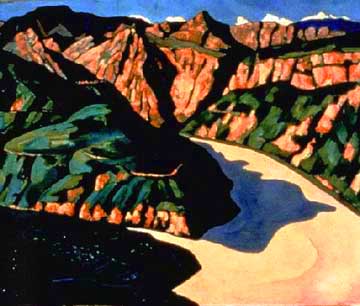


Edward Weston

Edward Weston began his career of photography at the young age of 16, his style being predominantly pictorial in nature. However, later in life after establishing himself a firm photography career, he renounced pictorialism in favor of straight photography, he would later become known as the "pioneer of precise and sharp presentation" with images of natural forms such as the human figure, seashells, plants, vegetables, and landscapes. His straight photography is very famous and I find it very beautiful. Perhaps I am more attracted to his later works than his earlier works.
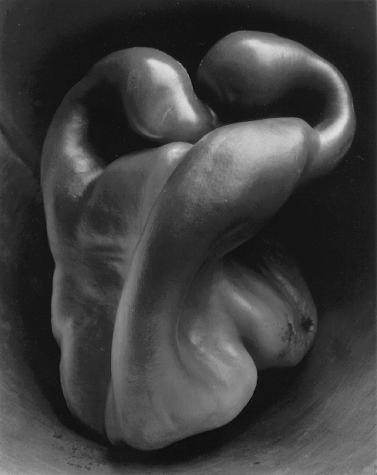
Sally Mann

We recently watched a video of Sally Mann in class, and some of the works featured in the video were part of her bone collection. She is infatuated with death and decomposition, the way life recycles itself. Death is comforting to her. She is attracted to ambiguity and tries to capture this in her photography. She firmly believes that you shouldn't take a photograph without having ambiguity, otherwise the photograph is meaningless. Sally Mann is known for taking pictures of her family and children--especially the nude portraits of her children that have often been said to be suggestive in nature. She also believes in a very large format camera.

Edward Steichen

Edward Steichen, once a fine art painter, soon found himself taking on photography with a pictorialist approach, which he soon mastered. In 1905, Steichen helped create the Little Galleries of the Photo-Secession with Alfred Stieglitz. After World War I, during which he commanded the photographic division of the American Expeditionary Forces, he reverted to straight photography, gradually moving into fashion photography. Steichen's 1928 photo of actress Greta Garbo is recognized as one of the definitive portraits of Garbo.
I think it is important for me to look at Steichen's work especially with our recent Holga endeavors. In many ways, the results of Holga photography are "pictorialist," much like Steichen's photography. He was a master at what he did, and it is always good to look back at the masters and learn from their ways.
Alfred Stieglitz

4.07.2008
Holga Experience

Recently, we were all given Holga 120s in my photography class. They are these "fantastic plastic" cameras--literally. The cameras are entirely plastic, including the lens and almost all of their guts. I was happy for this assignment because I think it was helpful in forcing me to "let loose" a little bit from the strict rules of photography. So much is out of my control when I use the Holga--even the viewfinder is essentially pointless! You cannot focus them. You cannot adjust for aperture settings. It is just point-and-click-and-hope. I have learned a lot about the Holga and am now enjoying it very much. I recently went out to photograph horses and barns and older houses along Victory Road. I believe I was successful and can't wait to get in the darkroom to see how they turned out. My Holga doesn't seem to have much vignetting, but there is an apparent blur on the edges of the film.
Pictorialism & Holga



Pictorialism was a movement in photography around 1885 which attempted to emulate the look or appearance of paintings and etchings through the photograph. Pictures are often black and white or sepia in color with very heavy manipulation. Soft focus, coating the lenses, special filters, and unique printing processes were all part of creating a photograph which was "pictorial." The goal of pictorialistic photographs was to fit into the art community by still having personal artistic expression which was the broadly accepted aesthetic of the time--due to paintings and etchings.


The images above are all taken with Holga cameras, and after our experience with Holga's firsthand, I can explain the qualities of a Holga image. Typically, the images will have a very soft radial blur, stronger on the edges, because of the camera's plastic lens. Also, because of the cheap nature of the Holga, images will often have a vignetting around the edges which is created from light leakage. This vignetting and softness is typical of a Holga image. It is very hard to get a crisp image with a Holga camera--though I don't know why you would want one.
When looking at Holga images and the photographs from the era of Pictorialism, many similarities can be discovered. The most apparent is the soft, blurry look the images have. It makes them seem much more surreal, and less like a photograph in nature. The vignetting seems to be more typical with the Holga images, however, there were not hard edges in Pictorialism. I also think the desired effect of both styles is very similar. They both desire to give off an essence that is not like photography. Although Pictorialism was attempting to mimic painting, and the Holga is not; the final images are very similar in their appearance. In a way, with Holgas, we can easily achieve a look similar to something the artists of the Pictorialism movement tried so hard to achieve.
Henri Cartier-Bresson
Paul Strand
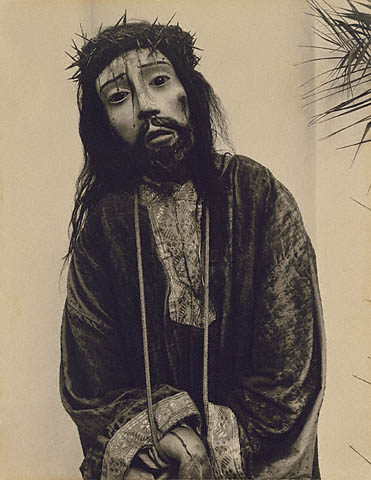
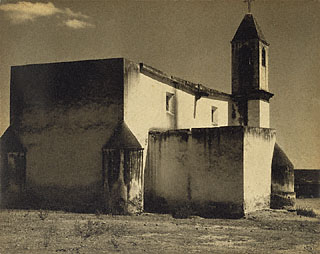 Paul Strand's photography is very well known. I thought it was important to include him in my blog as his style of portraiture has had a great influence on many modern photographers, and photographers after him. He did not simple do portraiture, however, he also too photographs of architecture and landscapes. The top picture, titled "Cristo" I simply had to put in here. The image itself has a quality which I'm not even sure of the words do describe it. It just.. has to be here. Something about that face, and the poised arms. Just something. Either way.. Enjoy. Also, below, I have a film that was photographed by Paul Strand titled "Manhatta". You should take the time to watch it if you appreciate photography.
Paul Strand's photography is very well known. I thought it was important to include him in my blog as his style of portraiture has had a great influence on many modern photographers, and photographers after him. He did not simple do portraiture, however, he also too photographs of architecture and landscapes. The top picture, titled "Cristo" I simply had to put in here. The image itself has a quality which I'm not even sure of the words do describe it. It just.. has to be here. Something about that face, and the poised arms. Just something. Either way.. Enjoy. Also, below, I have a film that was photographed by Paul Strand titled "Manhatta". You should take the time to watch it if you appreciate photography. Loretta Lux




When looking at Loretta Lux's work, I find it has a much different feeling that say the work of Meatyard or Gaskell. While their work feels to be much more on the creepy, eerie side, Lux's photographs--for me--feel surreal and painterly. They feel more like odd paintings than eerie, surreal photographs. I think this may be a result of the setting which the children are placed into. However, I do enjoy the photo manipulation which she utilizes in her works. It's very interesting, you have to do a double-take to make sure they aren't actually paintings.
Anna Gaskell
While looking for photographs of Anna Gaskell, I stumbled across this youtube video full of her photographs. The information to the side of the video informed me that Gaskell began her photographic journey with self-portraits, but eventually moved on to photograph children in scenes that were reminiscent of Alice in Wonderland. Her photography is very eerie, and definitely gets this quality from her choice of subject matter and the way in which she photographs--including lighting and such. It's all very dreary and dull. Take the time to watch the video. It's just crammed with photographs.

Arthur Tress

Arthur Tress's work is very, very aesthetically interesting to me. I find the photographs to have a weird, dark feel to them, requiring imagination and evoking emotions.
 Arthur Tress uses magic, theater, and fantasy combine to produce a mythic vision of the world. Tress frees photography from its naturalistic roots and invests it with symbolism and imagination. The photographs introduce an emotional "chiaroscuro" that disturbs and intrigues the viewer. His earlier, darker, vision has been replaced by the introduction of a mischievous humor. His images have a unique quality to them and I can't stop looking. He uses the square format, as I am seeing many photographers do, and I have to say it fits his work very well.
Arthur Tress uses magic, theater, and fantasy combine to produce a mythic vision of the world. Tress frees photography from its naturalistic roots and invests it with symbolism and imagination. The photographs introduce an emotional "chiaroscuro" that disturbs and intrigues the viewer. His earlier, darker, vision has been replaced by the introduction of a mischievous humor. His images have a unique quality to them and I can't stop looking. He uses the square format, as I am seeing many photographers do, and I have to say it fits his work very well.

Ralph Eugene Meatyard



My first reaction to Ralph Eugene Meatyard's work was a creepy feeling. The masks which he has the children wear in some photographs seem to meld into their skin, almost making them appear non-human. It is said that "Meatyard's work challenged most of the cultural and aesthetic conventions of his time and did not fit in with the dominant notions of the kind of art photography could and should be. His work sprang from the beauty of ideas rather than ideas of the beautiful."
Keith Carter

 Keith Carter was born in Madison, Wisconsin. He learned of photography from his mother, and when he was pursuing a Business Degree in college, actually found himself more drawn to photography. He ended up pursuing photography without any previous education--he was entirely self-taught. I admire Keith Carter's ambition. We watched a film about Keith Carter in my photography class. It was interesting to see how he just wouldn't give up, photography is like breathing for him. He loved it and lived for it. It was his true love, perhaps. His works resemble photographs taken with Holga cameras in that they have blurring and vignetting on the edges. I think this makes them more interesting and captivating than if they were completely crisp and clean.
Keith Carter was born in Madison, Wisconsin. He learned of photography from his mother, and when he was pursuing a Business Degree in college, actually found himself more drawn to photography. He ended up pursuing photography without any previous education--he was entirely self-taught. I admire Keith Carter's ambition. We watched a film about Keith Carter in my photography class. It was interesting to see how he just wouldn't give up, photography is like breathing for him. He loved it and lived for it. It was his true love, perhaps. His works resemble photographs taken with Holga cameras in that they have blurring and vignetting on the edges. I think this makes them more interesting and captivating than if they were completely crisp and clean. 
Stephen Shore

 Stephen Shore was interested in photography at a very early age. He got his first darkroom kit at the age of six!! He began using a 35mm camera and making color photographs by the age of ten. This is the same time that he received a copy of Walker Evan's book, American Photographs. He began his career at fourteen. He was the first living photographer to have a solo exhibition at the Metropolitan Museum of Art, and he was only twenty-four. Shore's photography from that point on included images from cross-country trips. I enjoy his photography because it reminds me of places I see when I drive around, though they may be in different cities.
Stephen Shore was interested in photography at a very early age. He got his first darkroom kit at the age of six!! He began using a 35mm camera and making color photographs by the age of ten. This is the same time that he received a copy of Walker Evan's book, American Photographs. He began his career at fourteen. He was the first living photographer to have a solo exhibition at the Metropolitan Museum of Art, and he was only twenty-four. Shore's photography from that point on included images from cross-country trips. I enjoy his photography because it reminds me of places I see when I drive around, though they may be in different cities. 
Peter Hugo

 Peter Hugo's photographic work focuses on global social issues, emphasizing Africa and other countries in development. His photography is a type of visual essay and is able to tell what's happening without needing words or documentation. I like his work because it is so interesting and foreign--at least to me. First the man walking with the hyena, as if it is his pet. It's such an odd situation, one that I know I'll never see in my lifetime. And then the other two portraits he took just captured the essence of these people. The final one of the man you can just read that his life has been a long one, probably a life that you could write a novel about.
Peter Hugo's photographic work focuses on global social issues, emphasizing Africa and other countries in development. His photography is a type of visual essay and is able to tell what's happening without needing words or documentation. I like his work because it is so interesting and foreign--at least to me. First the man walking with the hyena, as if it is his pet. It's such an odd situation, one that I know I'll never see in my lifetime. And then the other two portraits he took just captured the essence of these people. The final one of the man you can just read that his life has been a long one, probably a life that you could write a novel about. 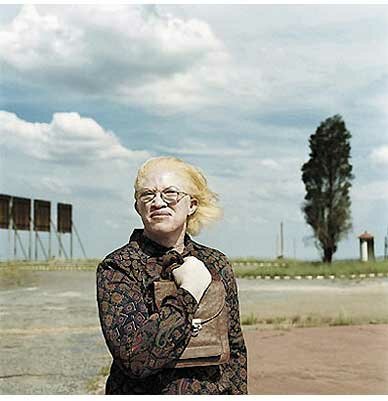
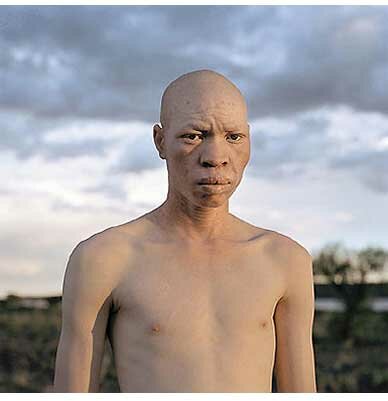
Walker Evans



I enjoyed looking at the work of Walker Evans because his photography occurred during the time of the Depression. Most of his shots are frontal views and not very candid, however, I don't mind because of the context. Somehow, there is something important and powerful about his pictures. You can read into the emotions of the landscape and/or people.
Lewis Hine



Lewis Hine's photography caught my attention almost instantly. The personal feeling of the portraits, the stories behind them and laid out in the eyes of the person photographed are so immense I cannot help but look at them. Lewis Hine was actually an investigative photographer who was very strong against child abuse in labor. I think his passion for the subject is evident in his work and may be one of the reasons it is so, so strong.
Subscribe to:
Comments (Atom)


